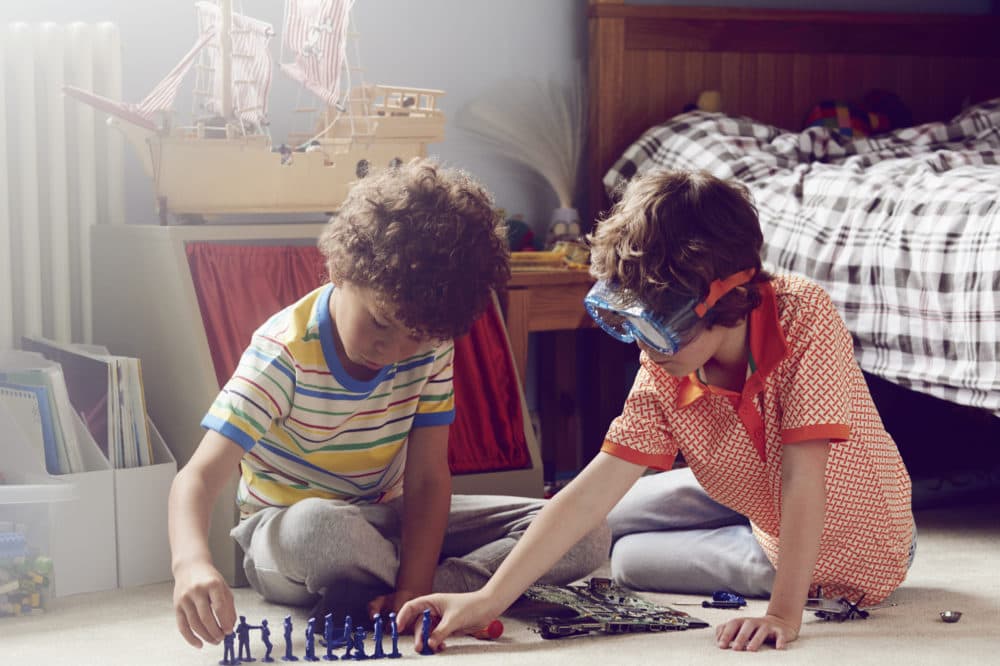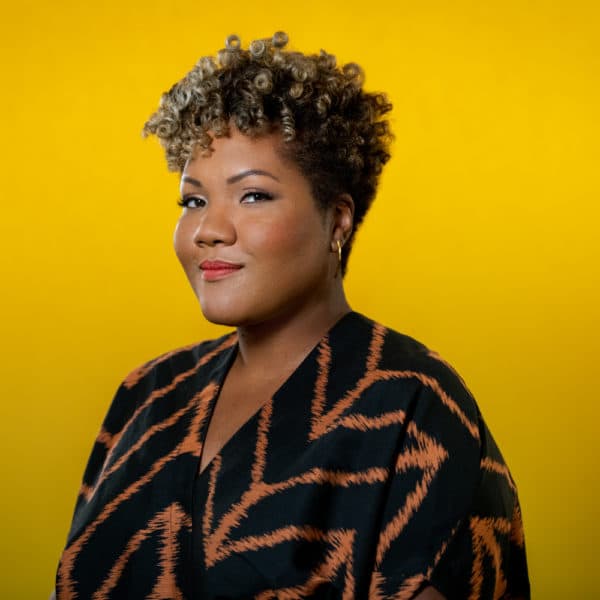Advertisement
Child Therapist On How To Address Kids' Stress, Trauma During Pandemic And Protests
Resume
Watching the nation simultaneously face COVID-19 and protests over the death of George Floyd is difficult for children to handle.
It’s a lot to grasp as an adult, but it can be even more challenging for children. There are signs and expressions of stress and trauma that parents can look out for in their kids’ behaviors.
Corinne Edwards, a child therapist specializing in trauma, says to look for symptoms on a continuum. In young children, “regressive behaviors” such as more whining, clinging and disrupted sleep could be signs of anxiety. More trauma-type symptoms would include bedwetting and other toilet problems, she says.
For teenagers, she says parents should watch for excessive isolation, expressions of hopelessness and expanded fears.
Edwards advises parents to tap into the connection and bond with their child to calm any nerves. Children can better tolerate stress when they have an adult to talk with and they feel heard, she says.
Oftentimes as caregivers, the "gut reactions" is to shield children from stress. But Edwards says in kids, “resilience is built in the brain through exposure to stress.” This is known among psychologists as a rupture, or when the brain then repairs itself after exposure to stress.
“So for parents, they can kind of assuage their own anxiety by knowing that, yes, this is hard for your child,” she says, “but your child learning these skills to cope with this is what's going to make them more resilient.”
Interview Highlights
“Well if they do open schools I would be excited but is everyone going to get sick or something? Because I don't want everyone to die.” — Logan, 11 years old
On how to address the fears children might be having over COVID-19 and what may happen in the future
“I think that what's so unique about the situation that we're in with COVID-19 is that we as parents are sharing these fears with our children, that oftentimes when our children are experiencing fears or distress, we're able to console them and give them perspective. And so it's hard to be going through it at the same time as our children. And I think what's so difficult with the pandemic is the fact that there is such unpredictability and it can be incredibly overwhelming.
“But the tool that parents have that they can utilize and is so accessible is their ability to connect with their child. What makes stress tolerable for children is having an adult to connect with and buffer from the stress. A child just being heard and validated in their fears does an incredible amount to make that stress tolerable. For them to receive messages of safety from their parents that they're not alone, that they're heard and that we're gonna get through this together.”
“I think it's going to be weird and I think it's going to feel weird to meet new people and the new teachers online. How do you transition from an old environment to a new one with new people and new faces and interact with this lockdown and COVID-19?” — Isabel, 14 years old
On how kids and their parents can navigate the new virtual experience of school
“I think she so nicely expressed what so many have been facing is how to deal with this new version of virtually interacting with the world. One of the things that we'd need to reframe for her and for other children with these same concerns is that what we previously viewed as impersonal, that this virtual connection seemed so impersonal, may now be what we have to access to make it personal. I think that her parents would be able to reassure her that as hard as this is and as strange of an adjustment as it is for all of us, it's what we have right now and we need to start finding ways to get adjusted and more comfortable with this way of interacting.
“And so, for example, they might have her start increasing some virtual connections with her friends to get more comfortable with herself on the computer, just to get past the glitches and how to work the computer so that it's in more of a flow so that way, she can be focused on more of the actual connection piece of the online schooling.”
“Well, what I miss is having to go into the store with my parents. And they’re always like, ‘Hudson, stay in the car.’ Why can't I just come with them? And I also miss school because it's more fun at school because lunch is kind of boring. Because lunch at school, you get to talk with your friends and we can't have recess at home.” — Hudson, 7 years old
On how to bring a sense of normalcy and social connection into a child’s life during the pandemic
“I love how beautifully he highlighted what is important to children in his developmental stage. That recess, where you're moving your body while also still socially engaging with your friends, is so important for their little bodies and their nervous systems and their brain development. It is hard to have those kind of Zoom meetings match that for them. They aren't as reliant on their social system in terms of their peers, for their identity.
“So, for example, teens really need their peers as part of their identity. But for young children, parents can fill that void for them. So parents taking some of that time to play with their child, to engage in some of that movement while socially engaging. I know a lot of parents have been walking more with their kids or taking a bike ride or going outside and just even throwing a ball for a little bit. Mimicking a little bit of what they're lacking in their life will go a very far way for younger children.”
On her advice for parents to help their children navigate news consumption during difficult times such as the death of George Floyd
“So as difficult as this time period is, it's also a chance to teach our children about how we want to consume the news and how we want to access social media. And so what is going to be the line between accessing information that you need, accessing social media to feel somewhat connected to what's happening around our country and around the world, but not doing it to the degree where it's going to move you outside your window of tolerance of distress, or where it's going to put you in a place where you feel so hopeless and powerless and shut down and numb. And so, for example, for [Tonya Mosley’s 13-year-old] daughter, that would be a personal decision and that would be something that you would be discussing with her. The body is an incredible anchor for safety. So when [she does] start to feel it in her body that she's starting to reach her max of the news or social media and it can give us this false sense of control — that if I can get enough information, then I would have enough control and be able to predict more in this time of uncertainty. But I think, again, it comes back to this idea of connecting with our children so that we can start having these conversations and not leaping into this role of telling them not to worry about it or it's not a big deal or it won't affect them. But hearing and validating their feelings and then collaborating with them on the support that they need so that they feel seen and heard and then helping them come up [with] ideas of … what would help increase feelings of safety? What would help decrease feelings of powerlessness?”
Cristina Kim produced this story and edited it for broadcast with Tinku Ray. Serena McMahon adapted it for the web.
This segment aired on June 3, 2020.
